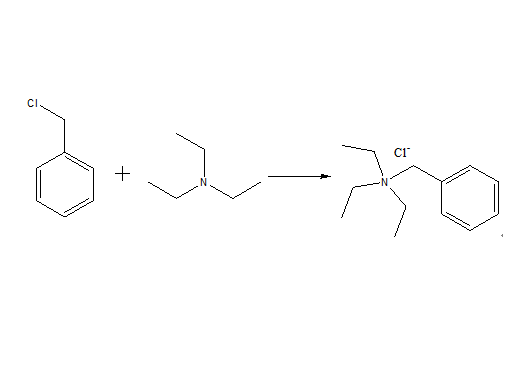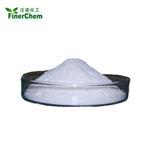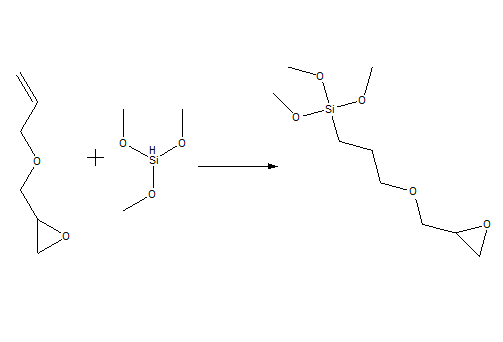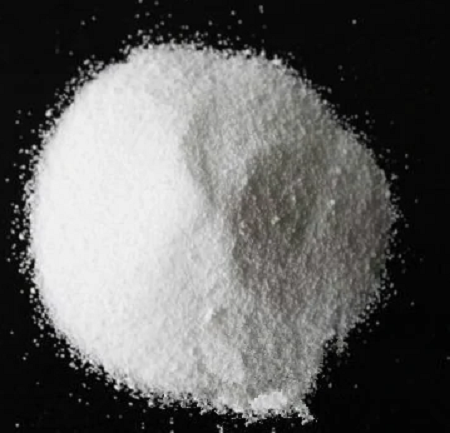Preparation method and application of benzyltriethylammonium chloride
Apr 22,2022
Background and overview
Benzyltriethylammonium chloride (TEBA for short) is a quaternary ammonium salt, also known as quaternary ammonium salt, pure white crystal or powder, similar to inorganic salt, hygroscopic, soluble in water, ethanol, methanol, isopropanol , DMF, acetone and dichloromethane, their aqueous solutions are conductive. Main uses: organic synthesis phase transfer catalyst, polymer polymerization curing accelerator, electronic industry organic electrolyte, oil field chemical agent, molecular sieve template agent, phase change cold storage material, high performance liquid chromatography analysis reagent, surfactant, descaling agent, adsorption agents, oil-displacing agents, etc. As a phase transfer catalyst, it has outstanding characteristics such as easy availability of raw materials, simple synthesis and low cost. In recent years, benzyltriethylammonium chloride has been widely used in organic synthesis reactions, especially in the two-phase reaction of water and organic solvents, with fast reaction speed, high yield, simple operation, low toxicity, etc. Features. Therefore, it is mostly used for nucleophilic substitution, carbene reaction and C-alkylation, N-alkylation, O-alkylation and S-alkylation and other reactions.
As a catalyst for chemical reaction, benzyl triethyl ammonium chloride can change the reaction rate of the reactants in the chemical reaction without changing the chemical balance, so that the chemical reaction rate is greatly improved, but the quality of its own before and after the chemical reaction and chemical properties have not changed.
Preparation

Prepare a 500ml three-necked flask with a thermometer, a stirrer and a constant pressure dropping funnel, dissolve triethylamine (101g, 1mol) in 200g polydimethylsiloxane in turn, and add benzyl chloride dropwise after stirring. (137 g, 1 mol), after the dropwise addition was completed, the temperature was raised to 80 °C and reacted for 5 hours. After a large amount of solid was formed, it was cooled to about 10 °C, filtered under reduced pressure, and the solid was washed with methyl ethyl ketone. After the solid was dried, white benzyl triethyl chloride was obtained. Ammonium 174g, purity 99.4-99.5%. The yield is about 76.3%.
Wherein the above-mentioned solvent polydimethylsiloxane can also be replaced by solvents such as ethanol, dimethylformamide or dichloroethane according to the existing conditions in the laboratory, and similar yield and quality can also be obtained.
Use
Benzyltriethylammonium chloride is a commonly used quaternary ammonium salt phase transfer catalyst, which can improve the reaction conditions, increase the yield, and enable the reaction that cannot be carried out under normal conditions to proceed normally. It has a very wide range of applications in the field of organic synthesis. Phase transfer catalysts were originally used for nucleophilic substitution reactions, and later developed for various types of reactions such as oxidation, peroxidation, and reduction, and have applications in pesticides, fragrances, photographic materials, medicine, plastics and other fields.
Benzyltriethylammonium chloride has the ability to dissolve in both the aqueous phase and the organic phase. The positive and negative ions in the quaternary ammonium salt form an ion pair in the aqueous phase, which can transfer the negative ions from the aqueous phase to the organic phase. In , the negative ions have no solvation effect, and because the positive ions are large in size, the distance between the positive and negative ions is also large, and the interaction between them is weak, and the negative ions can be regarded as bare, so the reactivity is greatly improved. Therefore, benzyltriethylammonium chloride can be used as a phase transfer catalyst for organic synthesis, a curing accelerator for polymer polymerization, an organic electrolyte in the electronic industry, an oil field chemical agent, a molecular sieve template agent, a phase change cold storage material, and a high performance liquid chromatography. Analytical reagents, surfactants, descaling agents, adsorbents, oil-displacing agents, etc.; curing accelerators for polymer polymerization of powder coatings, epoxy resins, etc.
References
【1】US4649220,1987, A
【2】Cao Guanghong. Preparation of benzyl triethyl ammonium chloride and its application in organic synthesis [J]. Liaoning Chemical Industry, 1991(05):16-19+42.
- Related articles
- Related Qustion
- Benzyltriethylammonium Chloride: Applications in Medicinal Chemistry and its Safety Considerations Jun 25, 2024
Benzyltriethylammonium chloride facilitates complex molecule synthesis but requires meticulous handling due to its harmful properties, necessitating strict safety measures.
- Benzyltriethylammonium chlorideuses Nov 16, 2021
Triethylbenzylammonium chloride, English name Benzyltriethyl-ammonium chloride, TEBA for short, molecular formula C13H22ClN, relative molecular weight 228.78, white crystal or powder, easy to absorb m
Benzyltriethylammonium chloride
56-37-1You may like
Benzyltriethylammonium chloride manufacturers
- Benzyltriethylammonium chloride
-

- $80.00 / 1kg
- 2025-02-28
- CAS:56-37-1
- Min. Order: 1kg
- Purity: 99
- Supply Ability: 5000
- Benzyltriethylammonium chloride
-

- $1.00 / 25KG
- 2025-02-28
- CAS:56-37-1
- Min. Order: 1KG
- Purity: 99%
- Supply Ability: 500mt
- Benzyltriethylammonium chloride
-

- $0.00 / 25KG
- 2025-02-28
- CAS:56-37-1
- Min. Order: 1KG
- Purity: 99%
- Supply Ability: 50000KG/month






